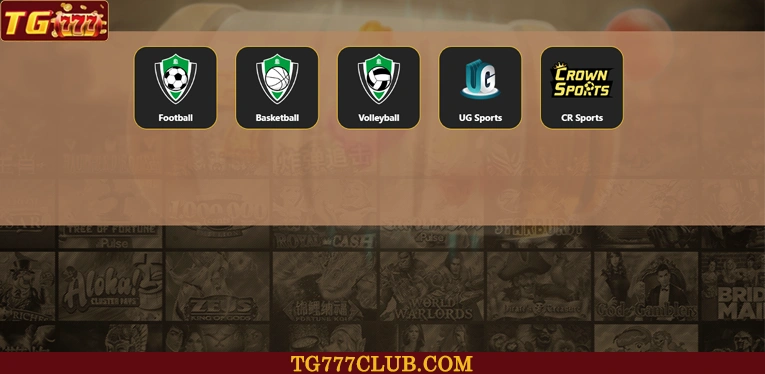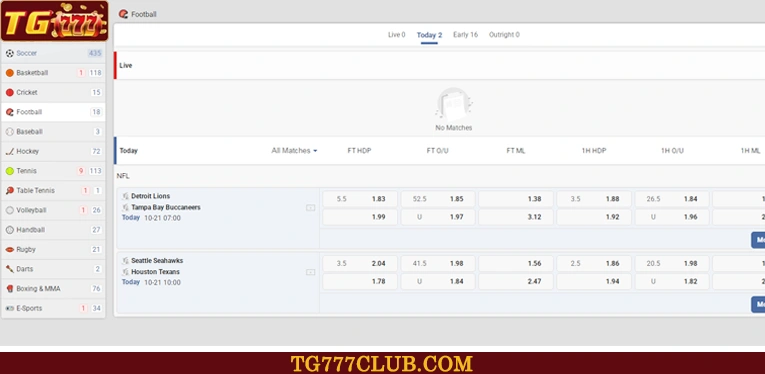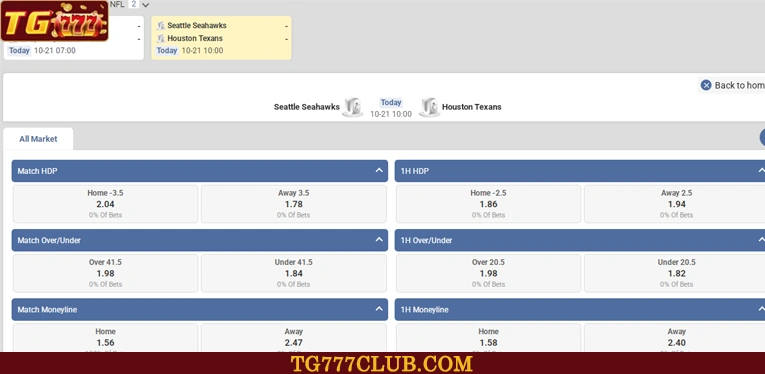Learn how to play Over/Under betting in soccer at TG777 bookmaker. Understand odds, lines (2.0, 2.5, 3.0), bookie rules, bankroll tips, and local payment methods with step-by-step examples.

If you’re searching for how to play over under betting soccer in the Philippines, you’re likely looking for a market that feels intuitive, reacts cleanly to data, and doesn’t force you to pick a winner. In Over/Under (Totals) betting, your wager is on the number of goals scored in the match, not which team wins. That means you can profit from fast-paced shootouts or tight defensive stalemates—so long as your read on the total is right. This guide explains the rules of totals (including Asian totals like 2.25 and 2.75), shows how odds work in local formats, and gives you a step-by-step strategy to make smarter decisions pre-match and in-play. You’ll learn how to turn research—team styles, xG, referee tendencies, and weather—into a confident approach tailored to the Philippine betting environment. By the end, the phrase how to play over under betting soccer in the Philippines won’t just be a search query; it’ll be your operating system for finding value.
How Over/Under Betting Works
At its core, the sportsbook posts a goal total—say 2.5—and you bet Over (3+ goals) or Under (0–2 goals). Most regular-season soccer markets settle on 90 minutes plus stoppage time, not extra time or penalties. In cups or knockouts, check the rules: the typical default is still 90’ unless specifically labeled “including extra time.”
Common Lines and Outcomes
- 2.0: If exactly two goals are scored, it’s a push and stakes are refunded.
- 2.5: Classic “half-goal” line—no push; it’s either Over or Under.
- 2.25 / 2.75 (Asian totals): Your stake splits across two nearby lines.
- 2.25 Over: Half on Over 2.0 (push potential), half on Over 2.5.
- 2.75 Under: Half on Under 2.5, half on Under 3.0 (push potential on 3).
These quarter-goal lines are powerful risk-control tools. If you want to master how to play over under betting soccer in the Philippines, learning these split outcomes (half-win/half-loss) is essential.
Understanding Odds Formats for Filipino Bettors
Locally you’ll often see Decimal odds, while some books also display Malay, Hong Kong, or Indo odds.
- Decimal: Returns = Stake × Odds. Implied probability = 1 / Odds.
- Hong Kong: Profit per 1 stake (similar to decimal minus 1).
- Malay & Indo: Can be positive or negative; they reflect risk for 1 unit profit.
When you compare books or track closing line value, convert them to one consistent format (decimal is easiest). Accurate conversions make how to play over under betting soccer in the Philippines more transparent across platforms.
Asian Totals vs European Totals
European totals use half-goal lines like 2.5, eliminating pushes. Asian totals introduce whole and quarter-goal lines (2.0, 2.25, 2.75, 3.0) that split your stake and smooth variance. If you want insurance against landing exactly on a key number (like 2 or 3 goals), Asian totals can refund part of your stake (push) or create half-wins/half-losses. That flexibility is one reason many serious bettors in the Philippines prefer Asian totals.
Pre-Match Research That Moves the Total
To internalize how to play over under betting soccer in the Philippines, build a checklist that translates directly to the total:
- Team Style & Tempo: High-press, quick transitions, and aggressive fullbacks often raise goal expectation; deep blocks and slow buildup suppress it.
- xG & Shot Quality: Look beyond raw shots—expected goals shows chance quality.
- Schedule Density: Fatigued defenses leak goals; rotated attacks may lack cohesion.
- Referee & VAR: Some refs award more penalties or let play run, affecting totals.
- Weather & Pitch: Heavy rain slows tempo and hurts finishing; heat can reduce late-game intensity.
- League Baselines: Bundesliga matches trend higher than many defensive leagues; know your environment.
Turn that into a scorecard (e.g., +1 for pace, +1 for xG spike, −1 for weather), then map it to a target total. Consistency wins more than any one “secret.”
Live (In-Play) Over/Under Strategy
Live betting is where how to play over under betting soccer in the Philippines becomes dynamic. Lines move with time decay, shots, and momentum. Use that to your advantage:
- Slow First 15 Minutes: If your pre-match read still favors goals, a drift from 2.5 to ~2.25/2.0 can create value.
- Tempo Shifts: Subs that add pace or switch to two strikers can make an Over suddenly cheap.
- Game State: A trailing favorite chases; a leading underdog parks the bus.
- Card Risk: Early yellow cards on defenders can raise the chance of errors or penalties.
- Halftime Windows: Markets overreact to low-shot halves; look for Under when both teams are content, Over when xG outruns the scoreboard.
Use cash-out or partial hedges sparingly; they’re tools, not habits.
Practical Examples
High-Octane Favorite vs Compact Underdog (2.75 line)
A Champions League favorite at home faces a deep-block visitor. Pre-match 2.75 offers split exposure: If it lands on 3, half your Under 2.75 stake pushes (Under 3) and half loses (Under 2.5). Prefer Under 2.75 if the favorite lacks its creative 10 and the visitor excels in set-piece defense; pivot in-play if an early goal forces the underdog out.
Derby with Card Risk (3.0 line)
Derbies raise variance—tackles fly, penalties happen. If the ref is card-happy and both sides press high, Over 3.0 with push protection can be sensible. If nerves dominate and the first 25 minutes are cagey, take a discounted Over after drift.
Heavy Rain, Slow Pitch (2.0/2.25 line)
Bad weather reduces pass speed and shot accuracy. Under 2.25 lets you benefit from a 1–0 or 1–1 while pushing part of the stake on 2–goal outcomes. Monitor live: if the field dries and tempo climbs, consider a small Over hedge.

Bankroll & Risk Management
Learning how to play over under betting soccer in the Philippines without bankroll discipline is like driving without brakes.
- Unit Size: 0.5–1.5% per bet is sustainable.
- Kelly-Lite: For advanced users, a fractional Kelly approach aligns stake with edge while capping volatility.
- Avoid Correlation: Don’t parlay Over with props that already depend on high scoring (e.g., multiple goal-scorer bets).
- Track CLV: Did you beat the closing total by 0.25–0.5 goals? Over time, that’s an edge signal.
- Spreadsheet Everything: Line taken, implied probability, model projection, result, notes.
Local Payments, Platforms, and Compliance Notes
Philippine bettors typically fund accounts via e-wallets or crypto on some platforms, with standard KYC checks for security. Always secure your account with 2FA, use strong passwords, and keep records for withdrawals. No matter how well you know how to play over under betting soccer in the Philippines, stay within local laws and play responsibly.
Common Mistakes to Avoid
- Chasing “Over 2.5” in Slow Leagues: Respect league baselines.
- Ignoring Referees/Weather: Penalty-prone refs or storms can swing totals.
- Misreading Quarter Lines: Know how 2.25/2.75 split settlement works.
- Overreacting to One Metric: xG is powerful, but context (injuries, travel) matters.
Advanced Angles
- xG Modeling: Build a simple model (rolling xG for/against, pace, venue, days rest). Convert to projected totals.
- Market Reading: Recognize steam (sharp money moving numbers) and decide whether to follow or wait for a better re-buy.
- Schedule Tells: Mid-table sides with mid-week cups often rotate—lower chemistry can suppress goals.
- Personal Baselines: Create team “goal environments” from 20–30 match samples; track how quickly they change under new coaches.
FAQ
How exactly do Asian quarter-goal totals (2.25, 2.75) settle, and when should I choose them over a flat 2.5?
Asian totals split your stake between two adjacent lines, which smooths variance and protects you around key numbers (like 2 and 3 goals). Suppose you take Over 2.25 at 1.90 odds with a ₱1,000 stake. The book treats this as ₱500 on Over 2.0 and ₱500 on Over 2.5.
- If the match ends 2 goals, the Over 2.0 half pushes (₱500 returned), while the Over 2.5 half loses (₱0 returned).
- If the match ends 3+ goals, both halves win.
- If it ends 0–1 goals, both halves lose.
For Under 2.75, your stake is half on Under 2.5 and half on Under 3.0. - If the match ends 3 goals exactly, the Under 2.5 half loses, but the Under 3.0 half pushes—a softer landing than losing everything.
Choose quarter-goal lines when you believe the true total is close to a key number and you want partial protection against landing on it. If you expect a clear edge far from the key number (e.g., your model projects 3.2 goals and the market is 2.5), a simple Over 2.5 might maximize value without paying for push insurance.
Do Over/Under bets include extra time and penalties, and how do I verify settlement rules before placing a wager?
By default, soccer totals settle on 90 minutes plus stoppage time only—no extra time, no penalties. Books typically label exceptions clearly (e.g., “Including Extra Time”). Before placing a bet:
- Read the market title closely; some sites group multiple markets on one page, and it’s easy to click the wrong one.
- Open the house rules page and search “settlement,” “football,” or “soccer” to confirm the 90’ standard.
- Cup ties & knockout rounds: Many bettors accidentally assume totals include ET because the fixture must produce a winner; don’t. If you want ET covered, find the specific market that says so.
- Player or team specials rarely affect totals settlement—but always confirm whether red cards, VAR overturns, and abandoned matches trigger voids or action under that book’s policy.
Which odds format should Filipino bettors use for totals (Decimal, Malay, Hong Kong, Indo), and how do I compare prices across books?
Pick the format that helps you think in probabilities. Most bettors in the Philippines use Decimal because calculations are straightforward: p̂ (implied probability) = 1 / odds. For example, Over 2.5 at 1.95 implies 51.28% (1/1.95).
- Hong Kong odds show profit per 1 unit (so HK 0.95 ≈ Decimal 1.95).
- Malay/Indo can be negative; they express risk for a unit profit, which some find less intuitive for quick comparisons.
To compare books: - Convert everything to Decimal, then compute implied probabilities.
- Track Closing Line Value (CLV) as differences in goal lines (e.g., you took Over 2.5 when the market closed at 2.75) or as probability gaps after converting prices.
- Create a simple sheet with columns for line, your model total, book odds, implied probability, and edge. Consistent, apples-to-apples comparisons are essential to mastering how to play over under betting soccer in the Philippines with discipline.
What pre-match and in-play data actually improves Over/Under picks, and how do I avoid common stat traps?
Three data layers matter: environment, execution, and market response.
- Environment: Referee tendencies (penalties, advantage), weather (rain = slower ball speed, lower shot conversion), pitch quality, travel & congestion (fatigue hurts defensive shape), and league baselines (some leagues simply produce more goals).
- Execution: Team identities and tempo (high press vs low block), xG for/against trends, shot quality (big chances vs low-value pot shots), set-piece strength, and line-up news (loss of a ball-progressing 6 can throttle attacks).
- Market response: Where does the line sit vs your projection? Are steam moves pushing the total? Did your info already price in (e.g., public overreacting to a 5–2 last week)?
Avoid stat traps: - Don’t lean on goals scored in the last 5 without context; finishing luck regresses.
- Separate process (xG, shot locations) from outcomes (goals).
- Use rolling windows (8–12 matches) to balance recency and sample size.
In-play: Track tempo (entries into the final third, passes per defensive action), sub patterns, and game state (a trailing favorite inflates Over probabilities). If your pre-match read remains valid but the total drifts down after a slow 20 minutes, consider adding Over at a better number; if the match is far slower than projected (injury stoppages, persistent fouls), lean Under or pass.
How should I manage bankroll and sizing for totals, and what’s a practical roadmap from beginner to advanced?
Treat bankroll as operating capital.
- Units: Keep stakes at 0.5–1.5% of bankroll. Variance in totals can be sharp (early red cards, fluky pens), so avoid oversized bets.
- Kelly-lite: Once you can estimate an edge (your fair probability vs the book’s), consider ¼–½ Kelly to scale up modestly while controlling drawdowns.
- Correlation risk: Don’t tie an Over bet to goal-dependent props in parlays (e.g., multiple anytime scorers); you’re amplifying the same risk.
- Logging & review: Record line taken, price, your model total, closing line, result, and notes (“ref gave early pen, pace fell after 70’”). Review weekly to see whether you’re consistently beating the close and which leagues/teams you misprice.
Roadmap: - Beginner: Learn settlement rules, practice with 2.0 / 2.5 / 3.0 lines, and build a simple pre-match checklist (tempo, xG trend, ref, weather).
- Intermediate: Add Asian quarter-lines, track CLV, and develop an in-play trigger (e.g., buy Over if projected xG exceeds 1.4 at HT with only 0–0).
- Advanced: Build a light model (rolling xG, pace, rest days, referee), generate a projected total, and set price targets. Adjust for team-specific quirks (press resistance, set-piece coaching) and coach changes. Over time, specialize in the leagues where your projections consistently outpace the market.
Bonus: Is Over/Under “safer” than picking match winners, and when should I pass instead of forcing a totals bet?
“Safer” depends on how clearly you can read the environment. Totals avoid picking sides, but they’re vulnerable to rare events (early reds, VAR swings). You should pass when:
- Your projection sits on the market number (e.g., you make it 2.52 and the line is 2.5).
- Line-up uncertainty is high (late fitness tests for key creators/finishers).
- Weather or pitch reports are conflicting and could flip the expectation.
- You’re relying on one noisy stat (recent scores) rather than a balanced view (xG, tempo, referee, schedule).
Passing is a skill. In how to play over under betting soccer in the Philippines, selective aggression beats constant action. Save your units for spots where your number and the market meaningfully diverge, or where in-play confirms your pre-match read at a better price.

Conclusion
The heart of how to play over under betting soccer in the Philippines is reading environments, not predicting exact scores. Learn how totals settle, use Asian quarter-lines to control variance, and let data guide you: tempo, xG, referees, weather, and schedule. Whether you prefer pre-match discipline or in-play agility, the path to long-term improvement is the same—track everything, respect your bankroll, and keep refining your model with real match notes. Done right, Over/Under becomes the most transparent way to express your edge.
Read more:
- How to Win Asian Handicap Betting Soccer in the Philippines
- Virtual Sports Betting At TG777: A Thrilling Experience Awaits
